The end of Jesus’ teaching on the Bread of Life brings us straight to the gift of the Eucharist. St. John does not record the words of Christ at the Last Supper, but we may suppose that this part of the teaching was given at the Last Supper. St. John includes it as part of the discourse given in Capharnaum undoubtedly to help us connect the two events. Jesus began teaching about a real gift of food he was to give his disciples before his passion. Food is certainly something that “dies” in order to give life to the one who destroys it. Christ offers Himself to be destroyed, “chewed up,” consumed by those who believe in Him, that their hearts may be resurrected into His own Living Flesh. Eating the Eucharistic Bread with faith causes a transformation of our flesh, most especially the flesh of our heart.
The gift of self in God is total yet involves no suffering. The Father gives His Life, His substance, completely to the Son – the Son completely empties His whole being into the bosom, the heart, of the Father. This exchange is the Holy Spirit. Because of the fall, because of sin, the gift of self now involves suffering. Our own selfishness and the selfishness of others riddles generosity and self-gift with pain and hurt. The sensitivity of human flesh which once revealed pure receptivity to another, now manifests the brokenness and trepidation of the human soul sick with sin. By exposing His flesh to our teeth, Christ destroys the cycle of selfishness protected by the aversion to suffering. Suffering, freely and lovingly chosen, becomes instead the path back to an authentic vulnerability capable of self-gift. The vulnerability and sensitivity of human flesh becomes, in Christ, the nourishing food of eternal life.
Cyril of Alexandria:
How he will give them his flesh to eat he does not yet tell them, for he knew they were in darkness and would never in that state be able to understand what is ineffable.… But the power of learning suitably follows on those who believe.… It was therefore right that faith should first be rooted in them before understanding.… And it is for this reason (I suppose) that the Lord refrained from telling them how he would give them his flesh to eat, calling them to believe before they seek. For those who believed, however, he broke bread and gave it to them, saying, “Take, eat; this is my body.” … Do you see how he does not explain the mystery to those who had senselessly rejected the faith without investigation? But, to those who believe, he declares it most clearly.1
Augustine:
The Lord and master was inviting his slaves, and the food he had prepared for them was himself. Who would ever dare to eat his own Lord and master? And yet he said, “Whoever eats me lives because of me.” When Christ is eaten, life is eaten. Nor is he killed in order to be eaten, but he brings life to the dead. When he is eaten, he nourishes without diminishing. So do not be afraid, brothers and sisters, of eating this bread, in case we should possibly finish it and find nothing to eat later on. Let Christ be eaten; when eaten he lives because when slain he rose again.2
“Your ancestors ate […] and died…” :
This almost certainly means physical death as contrasted with spiritual life. Yet there was a late Jewish tradition that the generation in the desert died spiritually as well and would have no place in the world to come.3
Even though the verses in 51–58 are remarkably like those of 35–50, a new vocabulary runs through them: “eat,” “feed,” “drink,” “flesh,” “blood.”4
[…] there is really no Hebrew or Aramaic word for “body,” as we understand the term; and many scholars maintain that at the Last Supper what Jesus actually said was the Aramaic equivalent of “This is my flesh.”5
Footnotes
- Commentary on the Gospel of John 4.2.
- Sermon 132a.
- Brown, R. E. (2008). The Gospel according to John (I–XII): Introduction, translation, and notes (Vol. 29, p. 284). New Haven; London: Yale University Press.
- Brown, R. E. (2008). The Gospel according to John (I–XII): Introduction, translation, and notes (Vol. 29, p. 284). New Haven; London: Yale University Press.
- Brown, R. E. (2008). The Gospel according to John (I–XII): Introduction, translation, and notes (Vol. 29, p. 285). New Haven; London: Yale University Press.

